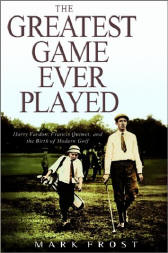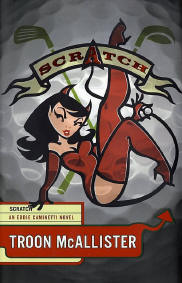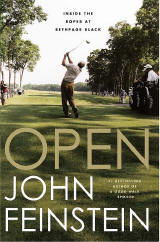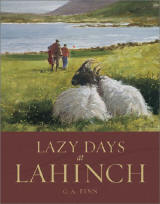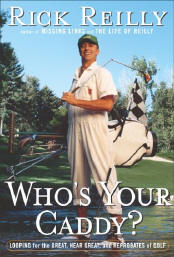The 2003 Christmas golf book gift guide
December 5, 2003
This year’s golf book gift guide for Christmas is a bit different than those offered here in prior years.
Instead of mini-reviews of photo-filled coffee-table books (not that there’s anything wrong with them), this time I’d like to highlight the top five books whose full-length reviews ran here during the last twelve months.
Good golf books have a long shelf life, and these offerings shouldn’t be hard to find. They are well worth seeking out and buying for your friends and loved ones, who may enjoy reading about golf as much as they enjoy playing it.
Mark Frost’s The Greatest Game Ever Played: Harry Vardon, Fransic Ouimet, and the Birth of Modern Golf (Hyperion, $30 SRP) is one of the best golf books I’ve ever read.
As I wrote last February, it combines several elements in a seamless narrative that builds to a compelling finish, a feat not often accomplished when the basic facts are already well-known.
It’s a great sports story about how Ouimet, a Boston-area caddie, overcame a host of obstacles to win the 1913 U.S. Open. It’s also a well-written social history of America and Great Britain in the years just before World War I, when golf was making its first serious inroads into America’s sporting consciousness.
In addition, the book is a fine biography of Vardon, Ouimet, and many other important contributors to golf’s heritage.
Troon McAllister graced us this year with a third helping of his brutally funny Eddie Caminetti series, with Scratch (Rugged Land; $23.95 SRP).
The hero of the tale, an otherworldly hustler, takes on the 800-pound gorilla of the golf ball industry, both on the course and in the courtroom.
It’s not a fair fight, of course, but it’s howlingly funny just the same.
The primary theme of John Feinstein’s Open: Inside the ropes at Bethpage Black, (Little, Brown $25.95 SRP) is that there’s a great story to be told about how a U.S. Open comes about, over and above who plays in it.
He proves his point with his usual flair for gathering disparate facts and blending them into a coherent, compelling sports narrative.
This Open was more special than most, because it was the first time that the championship was held on a course open to the public and owned by the public.
The Bethpage Open set several records, including the largest crowds, most volunteers, and the biggest sales at the huge merchandise tent.
As with his other sports books, Feinstein gives his readers great character studies of many of the key people responsible, several of whom spent years preparing the place for this one special week.
George Finn’s Lazy Days at Lahinch (Sleeping Bear, $18.95 SRP), a wonderful collection of loosely-connected short stories, would make a great movie.
The action centers around the famous golf course in County Clare on Ireland’s west coast, and evokes a wide range of emotions.
In the amusing “Road to Damascus” story, for example, a golf fanatic named Father Malachy Murphy meets his new pastor, Monsignor Pius Ignatius O’Flaherty, who is not a golfer.
Murphy has to figure out a way to change that fact so that his own lifestyle remains as golf-filled as possible.
The last piece, “The Big Dream,” involves an old Lahinch member, Ollie, sitting quietly in the club lounge, sipping his warm toddy.
He daydreams of his long-lost wife, and his mind then wanders to another dream of playing a long par-3 as a young man. The conclusion can bring tears to one’s eyes.
Rick Reilly showed a similarly surprising range with his newest golf book, Who’s Your Caddy? (Doubleday, $24.95 SRP).
The long-time Sports Illustrated writer caddied for a wide assortment of golfers, including Jack Nicklaus, Jill McGill, Tommy Aaron, Deepak Chopra, Donald Trump, David Duval, Bob Newhart, and John Daly.
Reilly used the experience to learn not only something about the people he looped for, but also something about himself and the sport.


